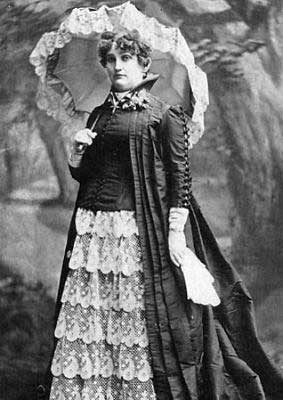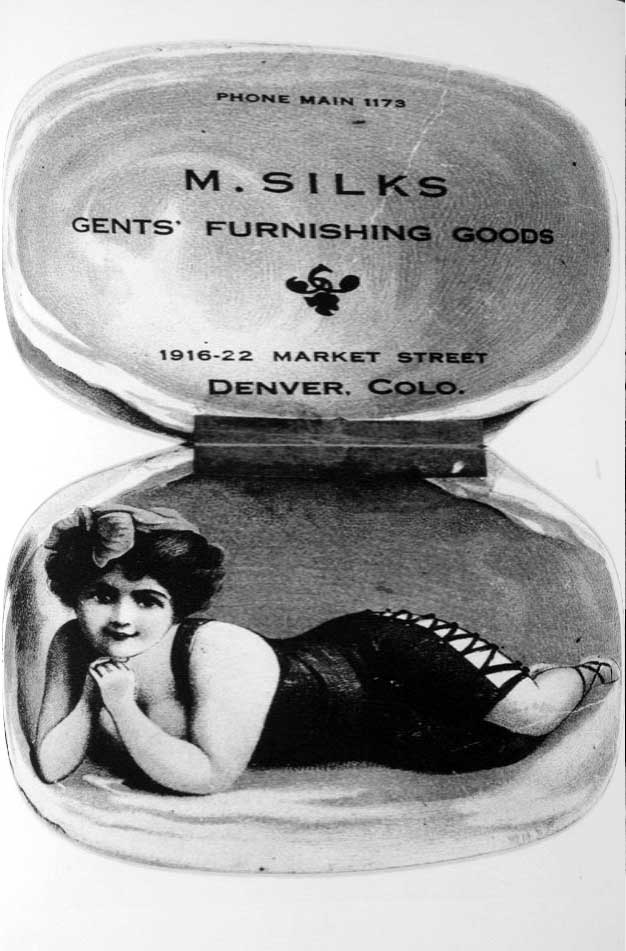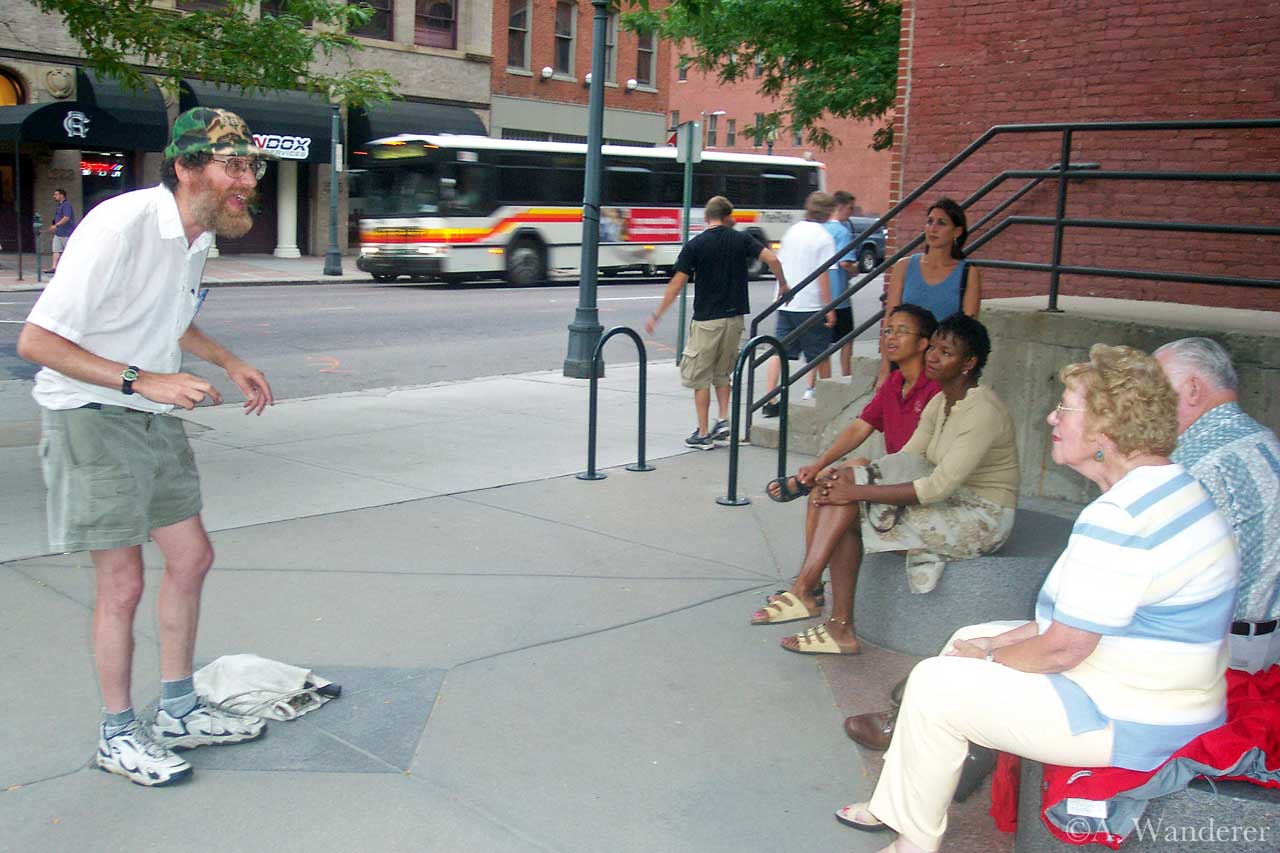Denver was the gateway to the Wild West in the Gold Rush days. Fortunes and dreams were made and destroyed and the red light district was a land of unabashed debauchery.
Denver historian, Phil Goodstein relates all the salacious details through his books and Denver History Tours.

Are you familiar with Denver’s sordid pre-20th century history? If not, historian and author, Phil Goodstein can fill you in on the fascinating, unusual and sometimes salacious details on his many walking tours.
On his Lower Downtown (LoDo) Tour he shares that the area was once a red light district centered around Market Street. The term ‘red light district’ came about in the late 1890’s when railroad workers would hang their signal lights outside bordellos while they visited the ladies of the night.
Denver’s Old Red Light District
One of Denver’s most famous ‘cowboy hookers’ — although she claimed to never be a prostitute herself — was Mattie Silks, born in 1848. Her former bordello at 1946 Market Street was renovated and still stands, named Mattie’s House of Mirrors Restaurant and Bar in her honor.
Silks made a fortune charging the young women for room, board, and wardrobe, while also taking an additional 50% commission off the top.
The way Goodstein tells it, Mattie’s one weakness was a charming ‘Confederate terrorist’ named

Famous Denver Madame Mattie Silks
Cortez ‘Cort’ Thompson. In typical old west style, once Silks discovered the ‘other woman,’ another Denver madam named Katie Fulton, the two engaged in a well-publicized shootout to settle the score.
The two women walked thirty paces away from each other, turned 90 degrees and shot.
The women missed each other but Thompson, standing nearby, was shot in the neck. He lived.
Fulton left town, heartbroken, and Thompson and Silks went on to live — albeit not so happily-ever-after.
Outlawing Prostitution
A political group known as the Goo-goos (for Good Government) succeeded in outlawing prostitution in Denver in 1912 and sent the women out to the Adam’s County Fairgrounds where they were treated for venereal diseases and taught how to be ‘good wives.’ The program was short-lived.

The 1982 ‘Red Book’ was a guide to the ‘Pleasure Resorts,’ or Bordellos, of downtown Denver
Colorado’s Early Prohibition Laws
The wild west ambience really ended in Denver after prohibition was instated in 1916, four years before the rest of the country. The legislation was put through due to the effort of the Women’s Christian Temperance Union, the Klux Klux Klan (which, at the time, had a very large presence in Denver) and a group known as the Anti-Saloon League.
In response, Mattie Silks tried to take her lucrative business underground as a ‘rooming house’ but the business changed hands and Silks died a miserable death after a fall at 26th and Lawrence.
A number of people have reported seeing an apparition of Silks at the corner of 26th and Lawrence, says Goodstein.

A 19th century ad for Mattie Silk’s Brothel
If you ever feel as icy chill while hanging out at the modern day Mattie’s House of Mirrors, Goodstein says that would be the spirit of Ella Wellington, a later madam of the establishment.
As the story goes, after her estranged daughter showed up seeking a job as a prostitute, Wellington ran up to the second floor of the building and shot herself in the head.
Phil Goodstein’s Books & Tours
Goodstein’s tours contain a combination of information on Denver’s colorful political past and interesting tidbits on the city’s wild west history.

A younger Phil Goodstein outside of Denver’s El Chapultepec Jazz Club
Goodstein is a Denver native and the author of many books that are collectors items (affiliate links) including:
• The Ghosts of Denver: Capitol Hill
• Murder in the Bank Vault: The Father’s Day Massacre and the trial of James King)
• The Ghosts of Denver: Capitol Hill
• Exploring Jewish Colorado and
• The Seamy Side of Denver, on which his LoDo tour is based.
Goodstein’s volume Denver from the Bottom Up: A People’s History of Early Colorado, provides an in-depth investigation into oddities such as why a notable ‘sports town’ such as Denver rejected the 1976 Olympics and a critical review of the enthusiastic development in the Platte River flood plane.
Goodstein has been conducting his LoDo tour since 1989, but had to move it to an earlier time because the area’s booming nightlife made evening tours difficult. He talks with obvious disdain about Denver’s 1967 urban renewal program.
In line with a nation-wide trend, the Denver Urban Renewal Authority (DURA) tore down some of Denver’s most historic downtown buildings. The wanton destruction spurred the creation of Denver’s historic preservation movement.
As he leads the tour beneath one of the city’s few remaining ‘skyway’ bridges on Larimer Street between 18th and 19th Avenues, Goodstein talks about the city’s ill-fated 1970’s plan to build such bridges throughout the city.
The project was abandoned after city officials assessed the cost and the existing bridges started to flood. They decided that Denver weather wasn’t near as bad as Minneapolis’, where there are many such structures.
No two Goodstein tours are ever the same. Our tour group was taking a rest stop at Sakura Square when an apparently sake-saturated auditor-elect Dennis Gallagher started heckling Goodstein from the second story above.
Someone, unconfirmed as Gallagher, also had no problem squandering money. Quarters, apparently aimed at Goodstein, started raining from the sky. Goodstein is a rival of Gallagher’s buddy, Tom Noel (State Historian for Colorado in 2018), who was with Gallagher.

Historian Phil Goodstein gives a tour in LoDo
In keeping with the extensive role booze plays in Denver history we walked on to hear the story of how Calamity Jane was refused service at the old Windsor Hotel (another DURA causality, where many also leaped to their death in the lobby).
A law at the time barred drink service to single females. Calamity Jane shot off four rounds from her pistol and said her famous line, “I ain’t no lady” before promptly receiving service.
Those interested in learning about the considerably less seamy but still rich history of the North Denver Highland’s neighborhood can sign up for Goodstein’s Highland Walking Tour that includes stops such as the old Streetcar Shopping Center, the Gargoyle House, former Ku Klux Klan churches and the pre-mayoral abode of former Denver mayor, Benjamin Stapleton.
Captions:
A). Historian and author, Phil Goodstein animatedly discusses the Seamy Side of Denver by Market Street Station on his Seamy Side of Denver Tour
B.) Historian and author, Phil Goodstein discusses the Seamy Side of Denver outsideDenver’s famous jazz club El Chapultepec on Market Street
C.) Phil Goodstein points out Diamond Lil’s Adult Emporium, 1215 20th Street, a pornography shop housed in a building that is listed on the National Historic Register
Addendum:
This is one of many stories I did for the North Denver Tribune during the 2002-2003 period, while under contract to produce several articles per week for them. I was surprised to recall that the story mentions coming across then-City Auditor, Dennis Gallagher inebriated while reporting that afternoon.
As the Trib was a community newspaper, I was surprised that bit didn’t get cut but I vaguely recall proclaiming to my editor that it was the best part of the article. Gallagher is well-known in Denver: he worked for 24 years in the state legislature, and was two-term Denver city council member before becoming the city’s auditor.
A couple of years ago my friend, Dave, aka, Little Fyodor, sent me a message to let me know he was reading Phil’s book, ‘North Side Story, Denver’s Most Intriguing Neighborhood‘ and that he noticed I was mentioned in the forward of the book.
Nice to know North Denver hasn’t forgotten me —thanks Phil!
In May 2021, Goodstein came out with a new book, “The Denver That Is No More: The Story of the City’s Demolished Landmarks,” which can be purchased at Denver independent bookshops. Goodstein has also resumed his popular tours.